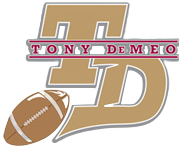During the summer I always like to read a couple of books on team building. One of the most important tasks of a coach is to build a team. This is particularly difficult in today’s narcissistic society that has a “me first†attitude. But what separates winning teams from losing teams is often time is simply which team plays better as a team. You see this everyday in professional sports. The best TEAM usually wins the championship not the best players.
Lawrence Fine is an outstanding coach, teacher and business consultant. He is an idea factory. He has written a host of other books but I particularly liked this one. He also co-authored a book with me on team building, To Be Number One, You Must Be One, (I like that one too). Lawrence has been a successful soccer coach and has used the same principles for team building and used them in the business world. More and more businesses are using the successful model of sports teams to build the spirit of team in their organizations.
In his book Team Building: A Guide for the Reluctant Manager, Lawrence touches on a key issue – the team you inherited. It’s a lot easier to build a team when you have hand- picked team players. But if you have been hired to turn a program around – guess what – you don’t have team players or they wouldn’t need to be turned around. This is what I really got into in this book.
Lawrence begins with the premise that you must first know the goals of the organization. In football, if the administration doesn’t want to be great; you’ll never get it done because you won’t have the resources. Once you know that; then you can create a Mission Statement.
The next step is to set the goals and objectives needed to accomplish your mission. I see some leaders, especially in academia, who say there mission is to grow potatoes and then plant corn. Your goals must be congruent with your mission statement.
When you have inherited a team, the key step is to know your people. The key objective is to bring that group together. When we came to the University of Charleston in 2005, we experienced the single biggest turnaround in conference history. The secret was getting to know our people.
Lawrence uses the 10-80-10 rule in analyzing a team. He says 10% is positive, 80% is in the middle and 10% is negative. You must eliminate the bottom 10% so they won’t infect the 80%. Everybody that has ever inherited players has had this task. It’s not pleasant but it must be done. Constantly evaluate and re-evaluate your roster.
Communicate with your players. Face to face and one on one is best. I’ve always had goal meetings and exit meeting with every player. When you have over a 100 players; this is a time consuming task, but nothing you do is more important. Be clear about goals, roles and expectations.
Lawrence has a great chapter on “Day to Day Difficultiesâ€. All coaches deal with stress, conflict, drama and distraction. You must have a plan in place to handle these difficulties. Caches deal with more difficulties today than any other period in recent times, their success depends on handling them.
This is an outstanding book. It is a quick read and very helpful to anyone that has to take a bunch of large egos and get them thinking: Team First. I recommend this book and suggest you take a look at some of Lawrence’s other material. You can purchase this book on Lawrence Fine’s website Lawrence Fine on Leadership. Have a great summer and take some time to do some good reading.

